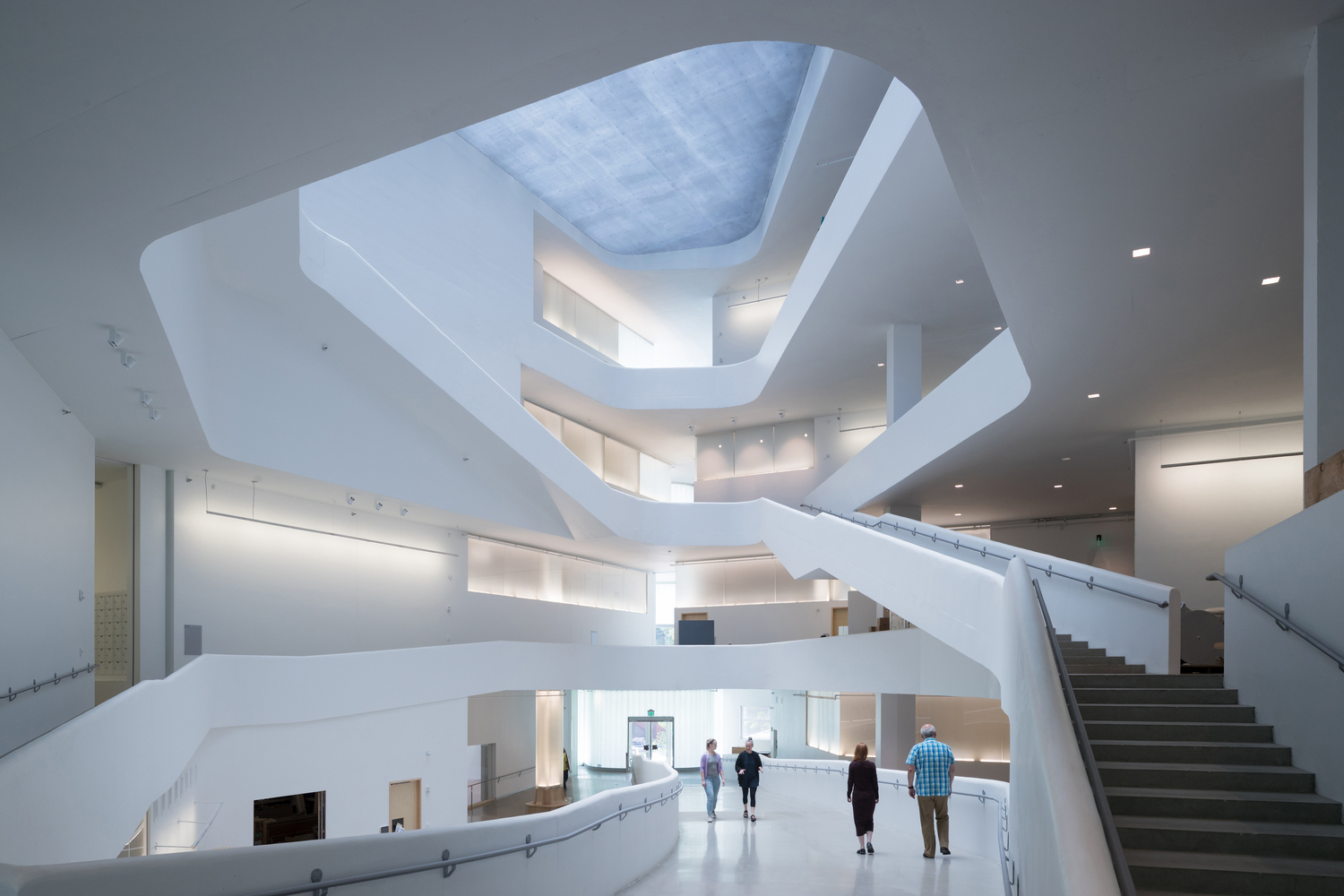Project Info
Architects: Steven Holl Architects
Architects In Charge: Steven Holl, Chris McVoy, Rychiee Espinosa
Design Team: Garrick Ambrose, Bell Ying Yi Cai, Christiane Deptolla, JongSeo Lee, Johanna Muszbek, Garrett Ricciardi, Filipe Taboada, Jeanne Wellinger, Human Tieliu Wu, Christina Yessios
Associate Architects: BNIM Architects
Structural Engineer: Buro Happold, Structural Engineering Associates
Lighting Consultant: L’Observatoire International
Sustainability Engineer: Transsolar
Mechanical Engineer: Design Engineers
Curtain Wall Consultant: WJ Higgins & Co.
Civil Engineer: Shive-Hattery
Audio/Visual Consultant: The Sextant Group, Inc.
Area: 126000.0 ft2
Year: 2013
Photographs: Courtesy of Steven Holl Architects

Introduction
Steven Holl Architects and BNIM Architects won the commission to design a new art studio facility for the University of Iowa (UI) Arts campus. Today the building has officially broken ground and entered the construction phase. The new Visual Arts Building will replace the original arts building from 1936, which was heavily damaged during flooding in 2008. It will be directly adjacent to and northwest of Art Building West, an earlier, award-winning Steven Holl design.

Details
To create balance between the existing Arts Building West, which is horizontally porous and of planar composition, the new Visual Arts Building was specifically designed to be vertically porous and volumetrically composed. Some key points of the design follow.

1.Interconnection: Horizontal Programs, Vertical Porosity: In a school of the arts today, interconnection and crossover are of fundamental importance. Today digital techniques open up increased interconnection between all the arts. Interconnection between all of the departments is facilitated in the vertical carving out of large open floor plates. Students can see activities ongoing across these openings and be encouraged to interact and meet. Further interconnection is facilitated by glass partitions along the studio walls adjacent to internal circulation.

2.Multiple Centers of Light: Natural light and natural ventilation are inserted into the deep floor plates via the “multiple centers of light.” Seven vertical cutouts encourage interaction between all four levels. These spaces of glass are characterized by a language of shifted layers where one floor plate slides past another. This geometry creates multiple balconies, providing outdoor meeting spaces and informal exterior working space.
3.Stairs as Vertical Social Condensers: Corridors as Horizontal Meeting Spaces: Stairs are shaped to encourage meeting, interaction and discussion. Some stairs stop at generous landings with tables and chairs, others open onto lounge spaces with sofas.
4.Campus Space Definition/Porosity: The original grid of the campus breaks up at the river, becoming organic as it hits the limestone bluff. The Arts West building reflects this irregular geometry in fuzzy edges. The new building picks up the campus grid again in its simple plan, defining the new campus space of the “arts meadow.”

5.Material Resonance, Ecological Innovation: Natural ventilation is achieved via operable windows. A punched concrete frame structure provides thermal mass at the exterior while “bubble” slabs provide radiant cooling and heating. A Rheinzink skin in weathering blue-green is perforated for sun shade on the southwest and southeast.





